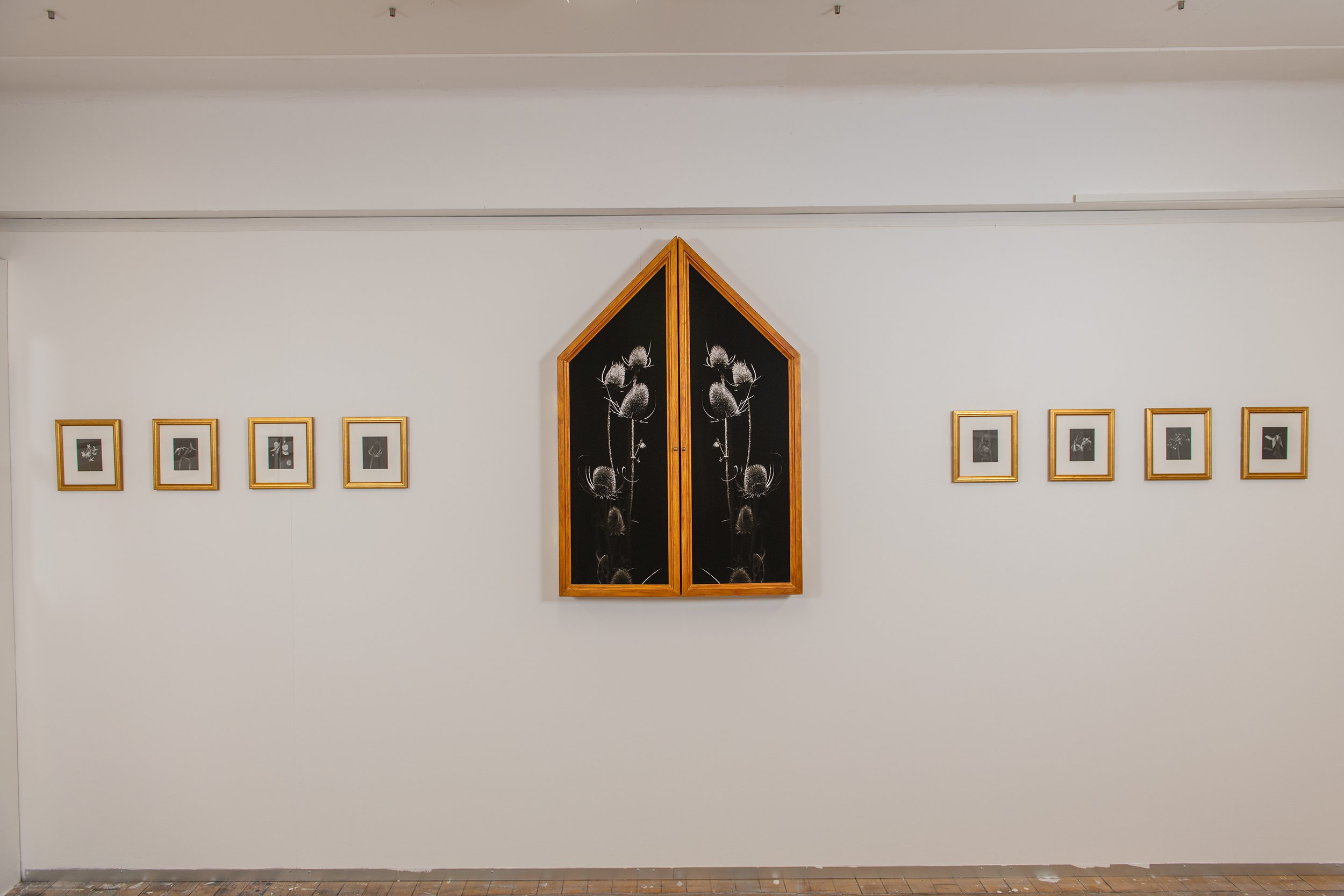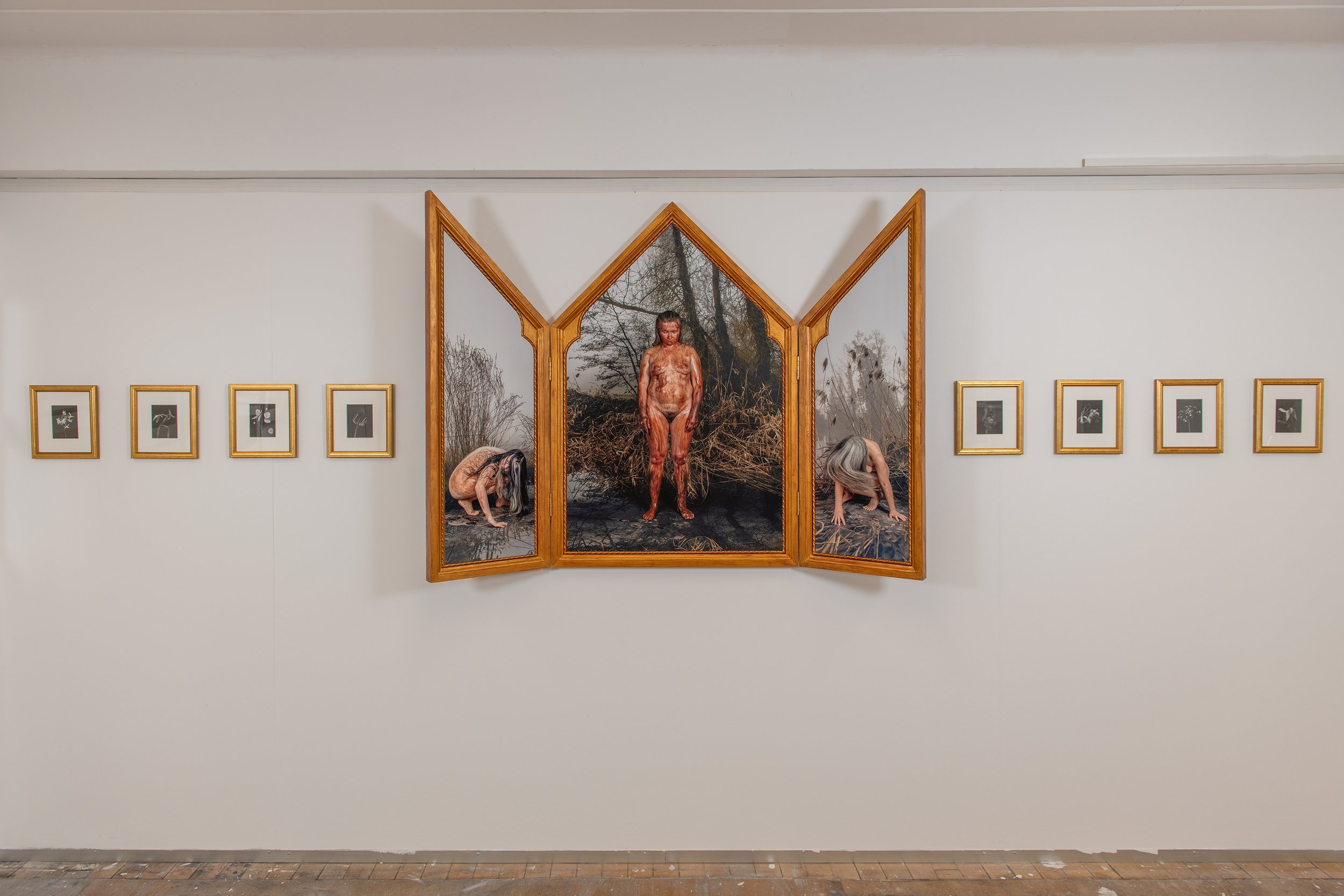Kasia Kowalska
Goddess, 2023
Edition of 3 + 1 AP
120.5 × 163.5 × 4.5 cm open / 120.5 × 81.5 × 9.3 cm closed
Altarpiece, Pigment Prints on Hahnemühle Photo Rag Smooth, Mounted on Foamboard in Bespoke Wooden Altarpiece with Mouldings and Brass Hinges
Flora, 2023
Edition of 7 + 2 AP
21.2 × 18.6 cm, Framed
Hand Prints on Ilford Multigrade Matt Fibre Paper, Mounted in Gold Foil Wooden Frames
Inspired by the pagan myths and beliefs of Central Europe, my project reflects an internal dialogue between my Polish Catholic upbringing and an interest in the natural world, folklore and the divine feminine.
The altarpiece Goddess depicts three Slavic female deities: Rusałka, Mokosz and Marzanna. Rusałka is said to bring life-giving force to the fields and is associated with water and drowning. A Slavic counterpart of the siren, she lures men to their death. Marzanna – the Anglo-Saxon Morana – symbolises the passing of winter; her domain are dreams and rebirth. To this day, her effigy is symbolically burned and drowned in Central European rivers during the Spring Equinox. Mokosz, the oldest deity in Slavic mythology, the Mother Goddess, is associated with damp soil after which she takes her name. She is the spinner of fate and the protector of women’s destiny. This project includes the series Flora in which I draw on my experience of wildlife gardening and floriography and consists of 4 × 5” contact prints of botanical studies of specimens from my own garden and local environs.
Combining performed self-portraiture, directed portraiture, staged photography and botanical studies, I investigate the relationship between the divine feminine and the natural world, and contemplate our personal and collective relationship with Nature, mythical archetypes and their symbolic representation in the contemporary context of renegotiating the positions of female agency in society and culture. Working with these narratives within allegorical landscapes and still lifes constructed through the combination of location and studio photography and blurring the lines between the artist and the model, I am disrupting the dichotomy of ‘nature versus culture’ debates created by the critics of feminist art practices surrounding the concept of the goddess.
Daffodil I
Tulips II
Honesty I
Teasel I
Teasels
Burdock I
Tulips II
Cow Parsley I
Laurel II

